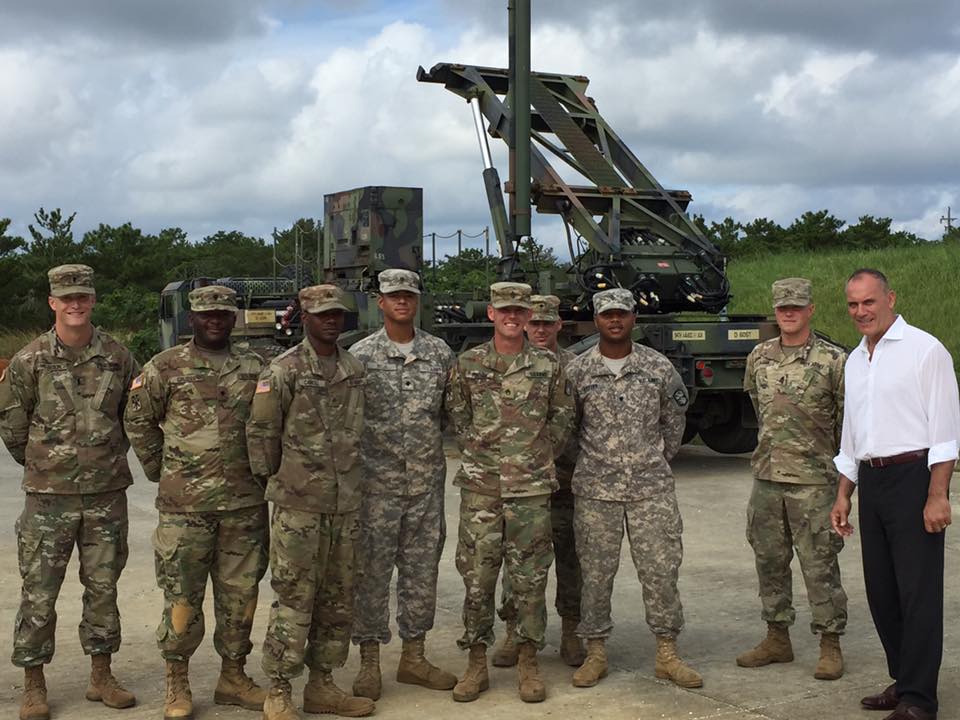This year alone there have been over 500 air intrusions on Japanese sovereign air space, most of them by the Chinese, a North Korean long range ballistic missile flying over Okinawa, 40 North Korea ballistic missiles tests, which the majority of them – Scud B variants and Musudan missiles can hit Japan, and of course two North Korean nuclear tests. These provocative actions, mostly all of them demonstrated in the southwest island region of Japan, has the Japanese Government greatly concerned for their defense of their country and the 127 million citizens they have to protect and defend. This has driven Japan to look into additional investment for Aegis Ashore sites, upgrading and increasing current Aegis and Patriot capability, developing the newest interceptor in the world today, the SM3 Block IIA, visiting the U.S. THAAD site in Guam several times this past month by their Joint Chiefs of Staff and to heavily rely on U.S. offensive air supremacy based in the center of their southwestern Island chain at Okinawa. It is home to Kadena Air Force Base and the 18th Fighter Wing, one of the most powerful air force bases in the world today.
Critical to having the air power capability and projection to defend the air space of the southwest region of Japan is the ballistic and air defense of the U.S. Kadena Air Force Base and the Japan Air Force Base in Naha. Both countries deploy a full air and missile defense battalion each made up of four Patriot firing batteries to defend their air bases and other critical power projection assets such as the U.S. Marine Expeditionary Forces and the population of the island. The United States 1-1 ADA Battalion and the Japanese 5th Air Defense Group along with the Japan Ground Self Defense Force Air Defense Brigade units are deployed in Okinawa for its defense.

Riki Ellison with soldiers from the 1-1 ADA Battalion in Okinawa. 11-22-2016
In an “overmatch” situation that Okinawa faces, it is absolutely necessary to have ISR (Intelligence, Surveillance, Reconnaissance) for left of launch tactics, to be able to defend the air bases enabling the offense to be in the skies and dispersing the air power to other bases while maintaining air dominance.
This flurry of aggressive threat activity in the southwest region of Japan has created a historic partnership between Japan and Korea as both have recently signed a shared intelligence sharing agreement (Link to article from Yonhap) on North Korea to leverage both countries’ ISR capabilities. Japan has further taken the initiative to create an air and missile defense task force made up of its three services air and missile defense capabilities to defend this southwest region. The flurry of aggressive behavior in this region is making United States look to best increase capability in air and missile defense in Okinawa by modernizing and replacing the current capability deployed, and properly maintaining the equipment that is harshly effected by the weather elements of salt and heavy rainfall of being on an island. There is no other place in the world harsher with corrosion from high sodium water of constant weather on missile defense equipment than on the islands of Okinawa and Guam. It requires constant painting and cleaning of the equipment that has to take the equipment off line and into proper housed maintaining facilities. The Japanese are much better than the United States in their approach, solution and familiarity with corrosion on their missile defense equipment from living on an island. There are lessons to be shared and learned from the Japanese and U.S. investment needs to be put into the proper and regular maintenance of the 1-1 ADA Battalion equipment deployed on Okinawa.
Being interoperable with the United States and Japan both parts and personnel on critical air and missile defense platforms such as the Patriot and Aegis Systems to form a future expeditionary air and missile defense force to surge throughout Japan when required is the ideal. Having interoperability best increases current capability and reduces burdens of manpower, cost and equipment between the two countries rather than doing it on their own. This begins with trust, common threats, common capability, joint exercises and live firing together of these interoperable systems that Japan and the United States share in their common defense.
MDAA was honored to spend a few days in Okinawa with our troops and bring them together with the Japanese Ground Self Defense Forces and the Japanese Air Self Defense Forces in the recognition of their defense of Okinawa.
